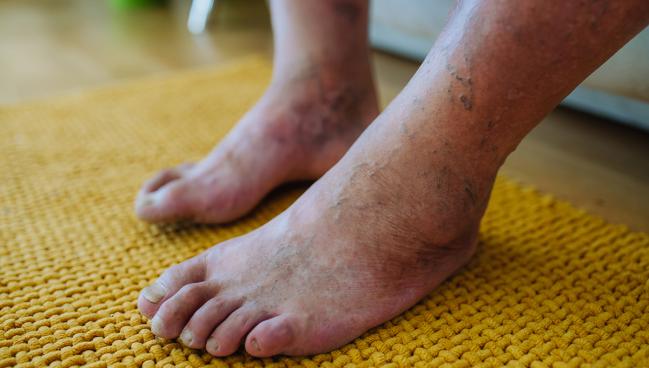New Scientific Statement Focuses on Below-the-Knee Technical Challenges
The article emphasizes that BTK interventions are rarely speedy or easy, and encourages operator patience and commitment.

A first-of-its-kind scientific statement for endovascular operators has pulled together essential knowledge on the treatment of below-the-knee (BTK) peripheral vascular disease, with an emphasis on navigating through a variety of technical challenges.
“There are a lot of papers out there about the disease, the outcomes, and the disparities,” noted senior author Mehdi Shishehbor, DO, PhD (University Hospitals Harrington Heart and Vascular Institute, Cleveland, OH). “We wanted to have a statement that covered the technical aspect of the devices that are currently available, particularly for those physicians who are early on in their commitment to CLTI [chronic limb-threatening ischemia] and who want some guidance in intervening and treating patients with BTK disease.”
Published January 17, 2024, in JACC: Cardiovascular Interventions, the paper covers a wide range of anatomical considerations, recanalization techniques, fluoroscopic guidance, tibial and pedal pitfalls, limitations of current devices, and complication management. Additionally, it looks ahead to promising advances like transcatheter deep-vein arterialization for no-option patients.
The statement also makes it clear that these types of interventions are neither easy nor speedy. Some take hours to yield successful blood flow in a tibial vessel, for instance, and others require two or three different guidewire changes in complicated settings like chronic total occlusions (CTOs).
In addition to tables that list commonly utilized BTK guidewires by size, property, and appropriate lesion types, Shishehbor and colleagues led by Jun Li, MD (University Hospitals Harrington Heart and Vascular Institute), include an algorithm that walks operators through recommendations on wire selection and options for escalation techniques based on lesion type, length, and characteristics.
All of it, Shishehbor noted, is aimed at supporting fellow BTK operators through what are often grueling endeavors to prevent limb loss and encouraging others to hone their skills to help a patient subset that is often undertreated and at risk for worsening health and death.
“Their mortality is higher than many of other conditions, their readmission is high. These are very sick people with many comorbidities,” he told TCTMD. “We know that losing a limb is hard and that many of our patients continue to work despite open wounds. . . . There is a level of dedication and emotion that many of us experience, but it’s also very rewarding.”
For Shishehbor, three factors go into being a good BTK operator: a commitment to making it a core part of your practice; an open-minded attitude and willingness to learn not just new techniques but also from fellow operators; and a solid program where endovascular specialists, surgeons, and others work together in a patient-centric model where specialties and departments take a back seat to teamwork and coordination.
Wound Care and Care Coordinators
Another key piece of CLTI treatment is wound care: despite advances in the field of BTK treatment, successful wound healing remains quite low in relation to procedural successes that maximize blood flow.
Given the importance of other factors such as edema, infection, and patient compliance in wound healing, the statement’s authors say a “personalized approach that takes these variables into consideration is likely the ideal strategy in obtaining the most-rapid wound healing.”
Throughout the document, the authors also emphasize the importance of maximizing guideline-directed medical therapy (GDMT) during the treatment course to reduce CV-related risks.
If you asked me what would be the biggest impact in the field of limb salvage, I would say it would be if we could have care coordinators for every patient. Mehdi Shishehbor
To TCTMD, Shishehbor said one of the largest obstacles in BTK treatment is gaps in continuity of care. “Many of these patients are on dialysis, many have diabetes. If you asked me what would be the biggest impact in the field of limb salvage, I would say it would be if we could have care coordinators for every patient,” he said.
In an ideal world, care coordinators would help patients navigate clinical pathways to ensure that, rather than making endless trips to emergency departments where they inevitably get admitted, they see appropriate specialists on time and maintain GDMT. Coordinators also could potentially foster better communication between individuals from multiple medical disciplines who see these patients, increasing the odds that a podiatrist’s concern about a wound makes it to the endovascular specialist in time to get the patient seen and prevent disease worsening, for example.
“Ensuring that these patients are properly getting treated is [crucial], more than stents and balloons and wires and anything else that we do,” Shishehbor stressed. “This could have an impact potentially on readmission.” This will be expensive, he said, and require support from the Centers for Medicare & Medicaid Services and other payers, but on the other hand it will help keep patients out of the hospital.
Shishehbor added that the endovascular community needs to do a better job of conveying the complex needs of CLTI patients if there is to be any hope of supportive financing for this type of care initiative.
L.A. McKeown is a Senior Medical Journalist for TCTMD, the Section Editor of CV Team Forum, and Senior Medical…
Read Full BioSources
Li J, Varcoe R, Manz M, et al. Below-the-knee endovascular revascularization: a position statement. J Am Coll Cardiol Intv. 2024;Epub ahead of print.
Disclosures
- Li reports having served on the advisory board for Boston Scientific, Inari Medical, and Medtronic and as a consultant for Abbott Vascular, Endovascular Engineering, and Philips.
- Shishehbor reports having served on the global advisory board for Abbott Vascular, Medtronic, Terumo, Phillips, Boston Scientific, ANT, and Inquis Medical.





Comments